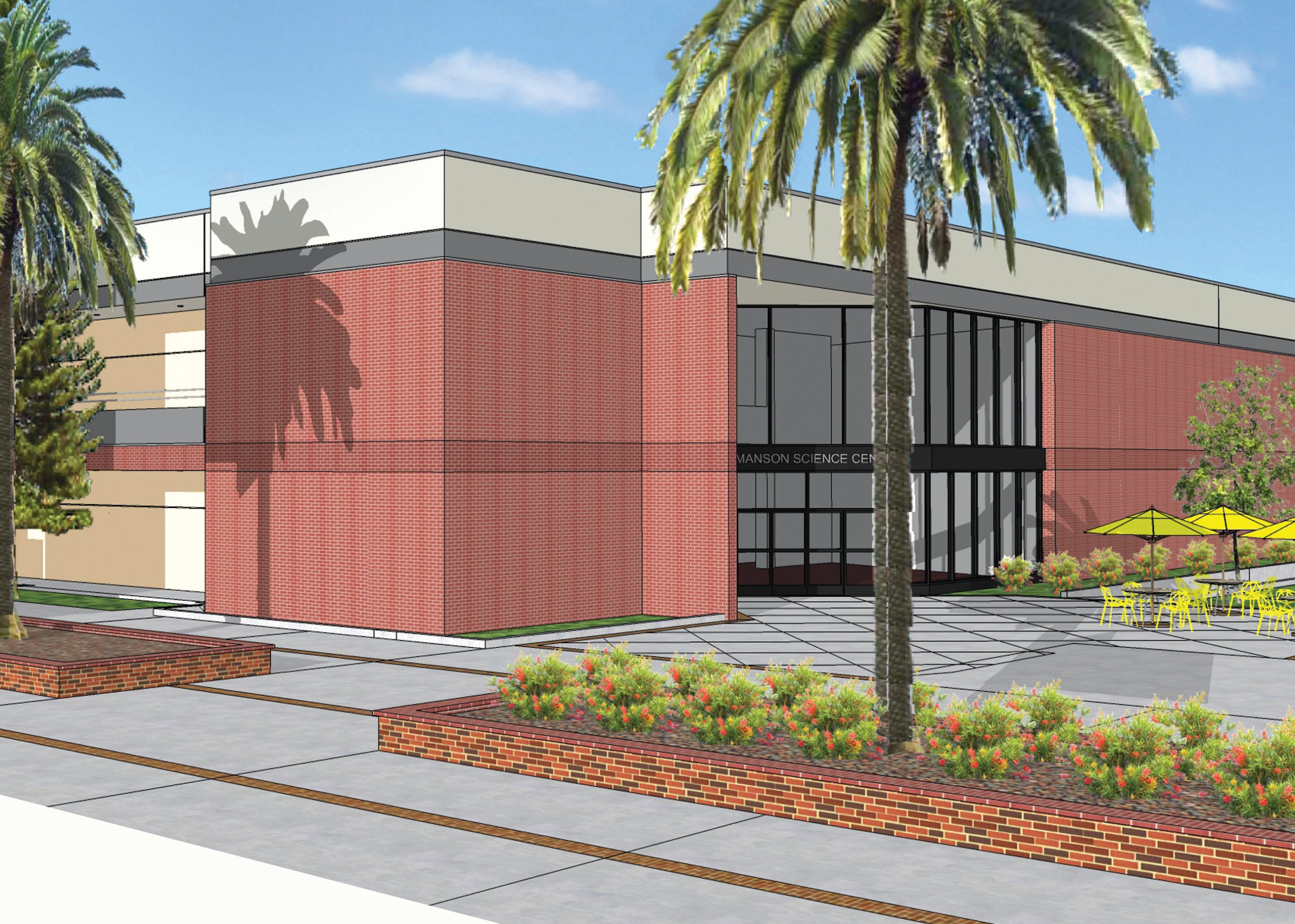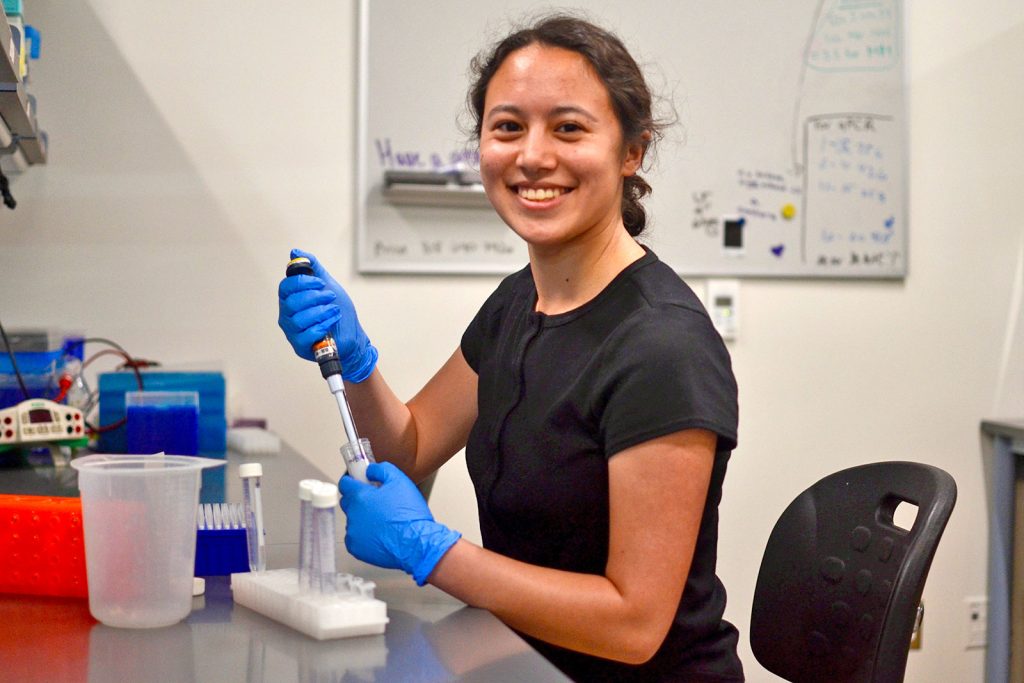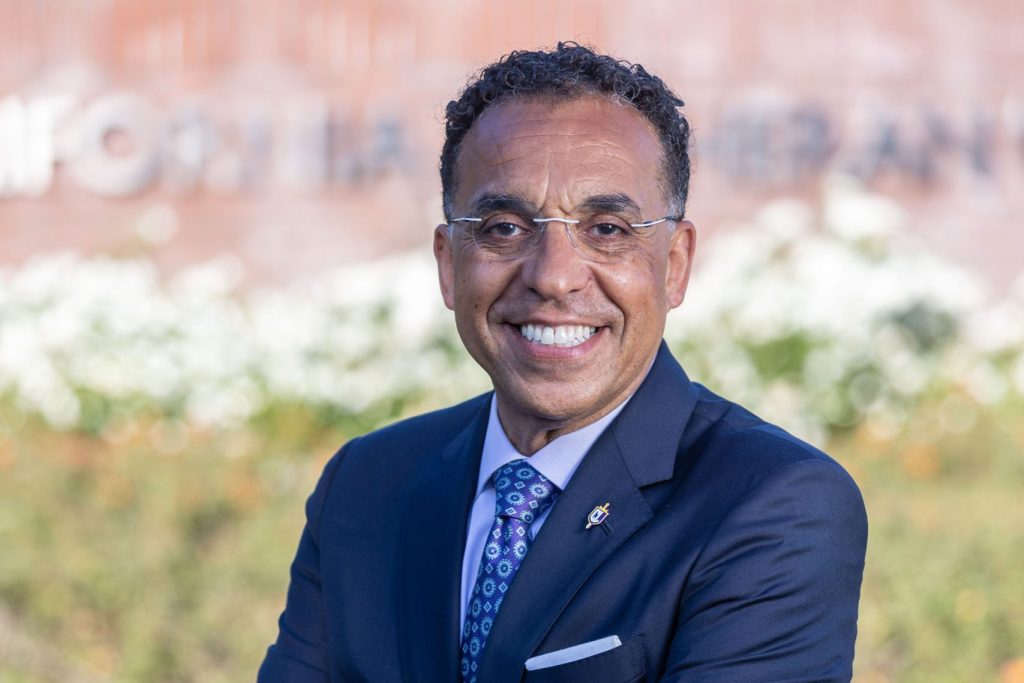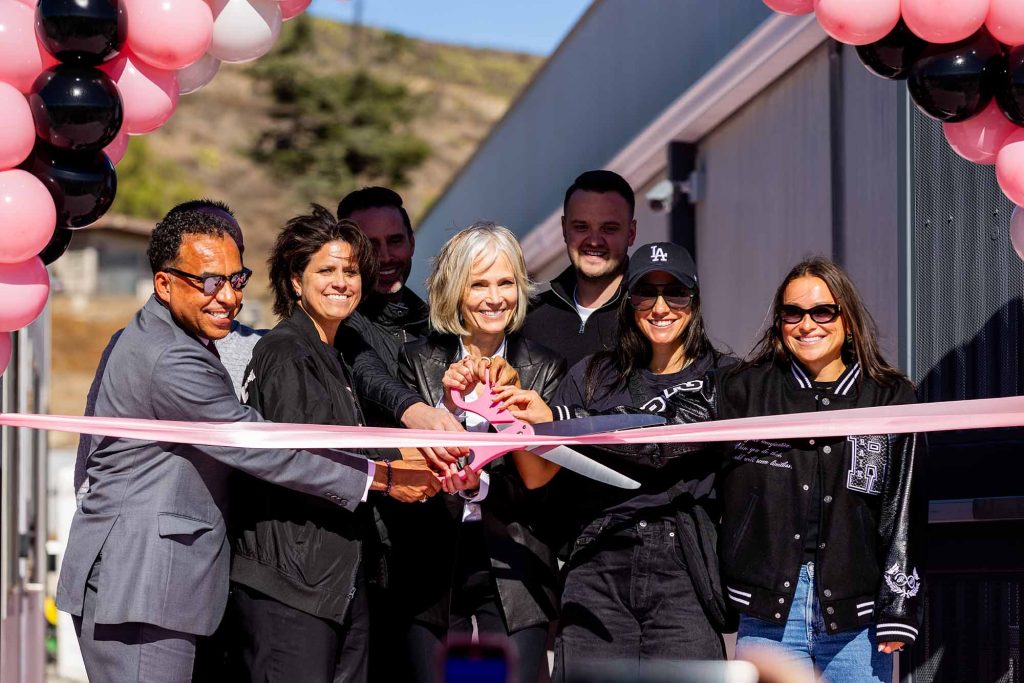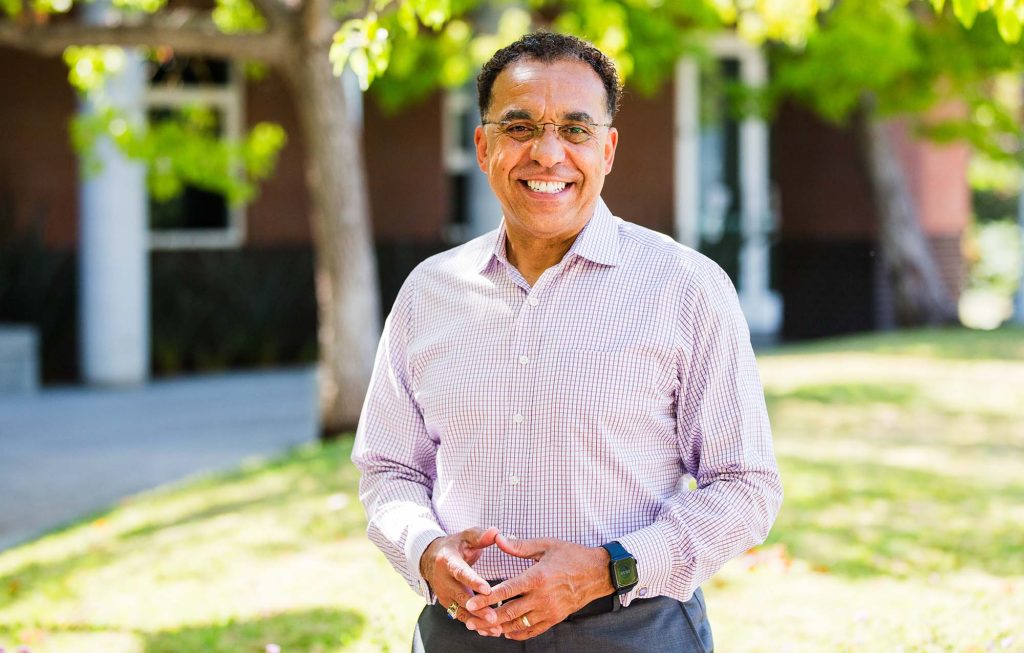A second-floor bridge walkway connects the Ahmanson Science Center, opened in 1988, to the new, top-flight Swenson Science Center, dedicated in 2021 during a COVID-19-delayed ribbon-cutting ceremony.
The contrasts one notices during the short walk from the newly equipped, airy and contemporary Swenson facility, across that bridge to the aging Ahmanson Science Center, are stark.
University leaders want to mitigate those contrasts so faculty and students in Ahmanson science classes have access to the kinds of state-of-the-art equipment their counterparts use in Swenson. With this goal in mind, Cal Lutheran will make critical upgrades that give our students the tools they need to succeed at a time when teaching and learning in disciplines such as chemistry and physics are constantly changing.
In 2007, Michele LeBlanc, PhD, a Cal Lutheran professor of exercise science, attended the Project Kaleidoscope STEM Institute in Chantilly, Virginia. The workshop used experiential learning and diversity simulation to help higher-education faculty and administrators transform undergraduate STEM – an acronym for science, technology, engineering and math – education in classrooms, departments and institutions. She came away thinking hard about how a university prepares for a technological and scientific future.
“What we learned at the workshop, and from visiting a lot of other science buildings across the country, and talking to colleagues who opened new science buildings, was this: We really need flexible spaces,” LeBlanc said.
Soon after she and other Cal Lutheran faculty members returned from that workshop, LeBlanc was named “project shepherd” for the Thousand Oaks campus’s state-of-the-art, $34 million Swenson Science Center.
At the time, that facility was a gleam in the design team’s eye. After a groundbreaking in 2018 and a “soft” opening in 2020, during the COVID-19 pandemic, the light-infused building was dedicated with fanfare in an October 2021 ceremony and is fully in use.
The Ahmanson Center, opened in 1988, continues to house classrooms and laboratories, Holm Atrium and Richter Lecture Hall. With an eye toward improving those and other spaces, interior renovations in this facility began in 2021, with more work to come next year. LeBlanc has been asked to shepherd this renovation process as well.
The university is determined to have two highly functional and contemporary science facilities to augment the teaching and learning in STEM disciplines, which a task force of faculty, staff and community members believes can distinguish Cal Lutheran from other schools.
Cal Lutheran is being very deliberate to build out academic programs that have workforce promise.
Cal Lutheran President Lori Varlotta
“One of the task force recommendations was the prioritization of science-based programs,” said Senior Associate Provost Taiwo Ande, MBA, PhD, who co-chaired the task force with Tom Hoener, MS, associate vice president for Enrollment Management.
That wasn’t surprising, given the university’s location in the Conejo Valley. Thousand Oaks and Ventura County have long been hubs for technology and biotech companies, including biotech giant Amgen.
“Cal Lutheran is being very deliberate to build out academic programs that have workforce promise,” said Cal Lutheran President Lori Varlotta, PhD. “These are areas where students can move into meaningful and lucrative careers and where there is not already a lot of program saturation in the market.”
During a walk-through of the aging Ahmanson building one recent afternoon, Christine Cano, MPPA ’19, Cal Lutheran’s capital project architect, listed the many improvements in the offing.

“That wall will go, and these solid walls will be replaced by windows,” Cano said, pointing to outmoded expanses.
“These hundreds of drawers of rocks and fossils on the first floor will be moved to the second floor. The herpetology lab will move. The bathrooms will be redone. The greenhouse lab will be gutted. There will be two modern physics studios with pods of tables.”
The building will feature new floors, furnishings, lights and heating and air-conditioning systems.
“Each room will have its own HVAC package unit and will be able to be controlled separately as opposed to ‘zoned’ cooling/ heating, which would turn on the system for a bank of spaces even though only one room calls for service,” Cano said.
The new HVAC systems and LED lighting are expected to greatly improve the building’s energy efficiency.
Upcoming construction will include new labs that will be easily configurable for specific projects, meeting the need for flexibility. A new lobby and math classrooms are in the works, as is a remodel of Richter Lecture Hall. Classes will begin in Ahmanson in Fall 2024.
Ahmanson also will feature LeBlanc’s top priority: “sandboxes.” These are open study and interaction spaces adjacent to professors’ offices, allowing for ready assistance as students work on projects and assignments.
These changes will modernize Ahmanson so that it, like Swenson, will facilitate mid-21st-century teaching and learning in some of academia’s most dynamic fields. Inside that three-story, 47,000-square-foot space, science is on display thanks to extensive interior windows that make work inside the labs visible from a central hallway on each floor.
Varlotta said the university already has committed some capital reserves for the Ahmanson project, but also is relying on funds yet to come from foundations and individuals. The total cost for improvements is projected to be $7.7 million.
“We are investing proudly in these areas since we know they will help our students put their skills to work in the world,” Varlotta said. “Nothing could be more directly aligned with the values of a Lutheran arts and science university.”
HOW TO HELP:
With renovations underway, now is the perfect time for our alumni and friends to support this important project. If you are interested in learning about available naming opportunities, view the list here. For more information, please contact Cal Lutheran’s Advancement office at 805-493-3160 or development@CalLutheran.edu.
Martha Groves is a Los Angeles-based freelance journalist who worked as an editor and a reporter for the Chicago Daily News, Philadelphia Inquirer and Los Angeles Times.


